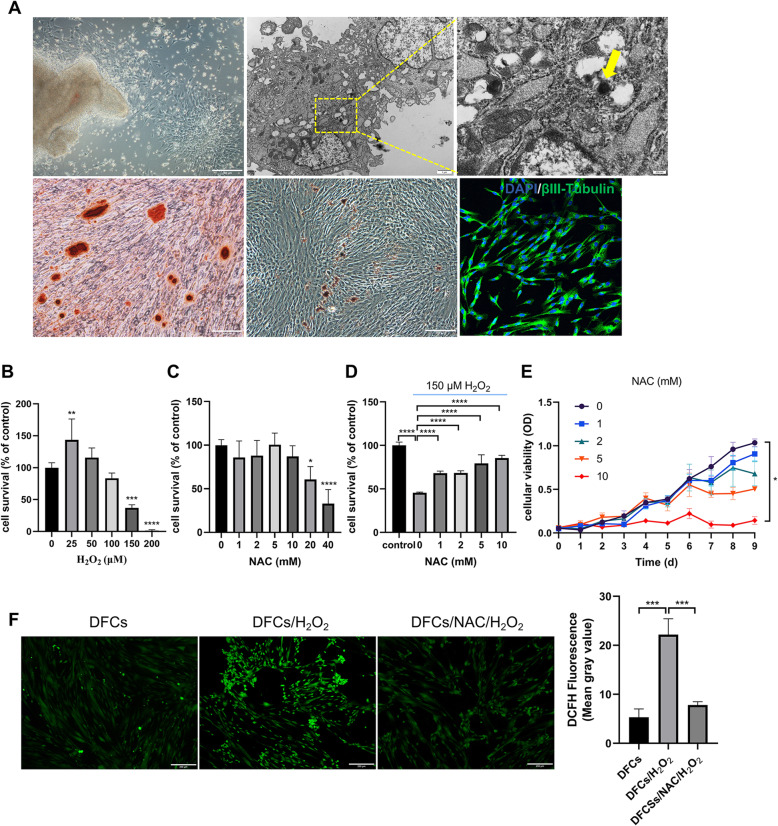Fig. 1.
Characterization of DFCs, establishment of H2O2-induced oxidative stress model, and determination of particular NAC treatment dose. a Characterization of DFCs. Primary DFCs were adherent to plastic and showed colony-forming abilities. TEM evaluations showed homogeneous electron-dense granules without membranous structures (indicated by yellow arrow). After being cultured in osteogenesis and adipogenesis-inducing media for 14 days and in neuronal-inducing medium for 2 h, the cultured DFCs showed mineralized nodules, lipid clusters, and positive βIII-tubulin expression, respectively. b Effect of different concentrations of H2O2 on the viability of hDFCs. c Effect of different concentrations of NAC on the viability of hDFCs. d Effect of NAC on the viability of hDFCs under oxidative stress conditions induced by 150 μm H2O2. e Effect of NAC on the proliferation of hDFCs for 1 week. f Assessment of ROS levels using fluorescence microscopy and statistical analysis of DCFH fluorescence from three experiments. Asterisks indicate statistically significant differences compared with the control group. ∗P < 0.05, ∗∗P < 0.01, and ∗∗∗P < 0.001

